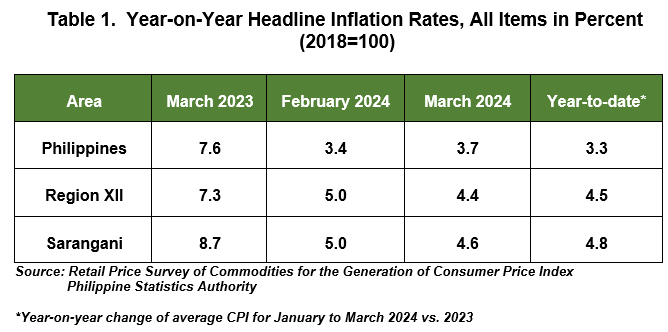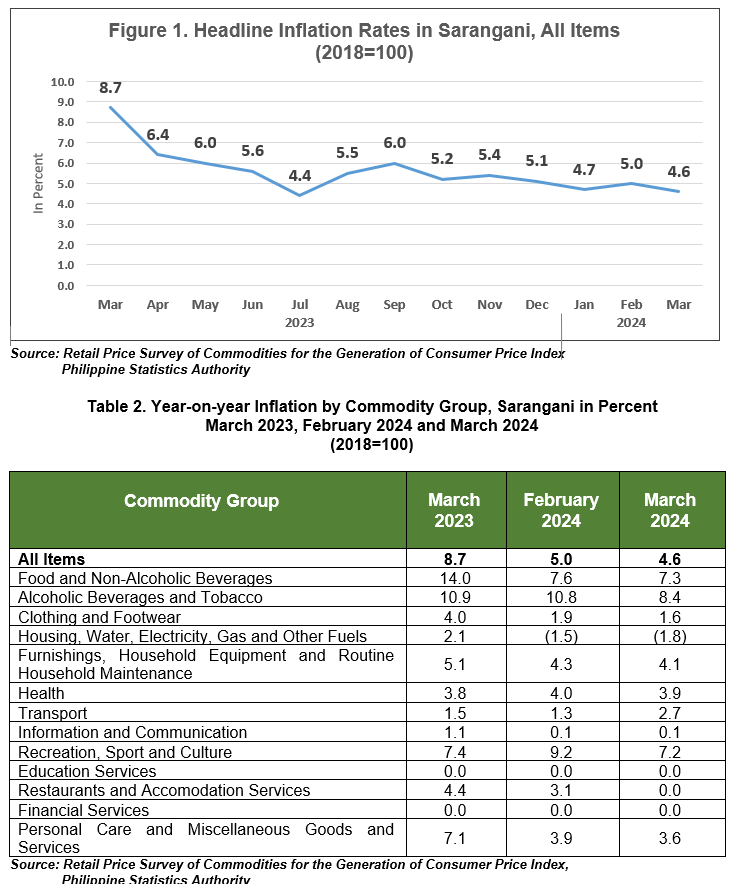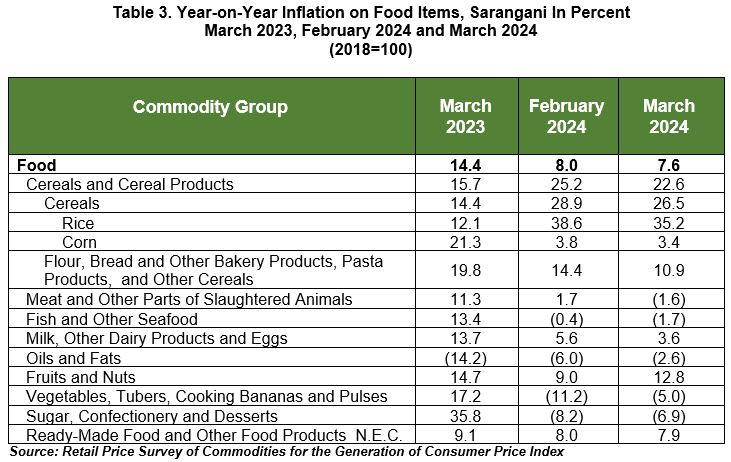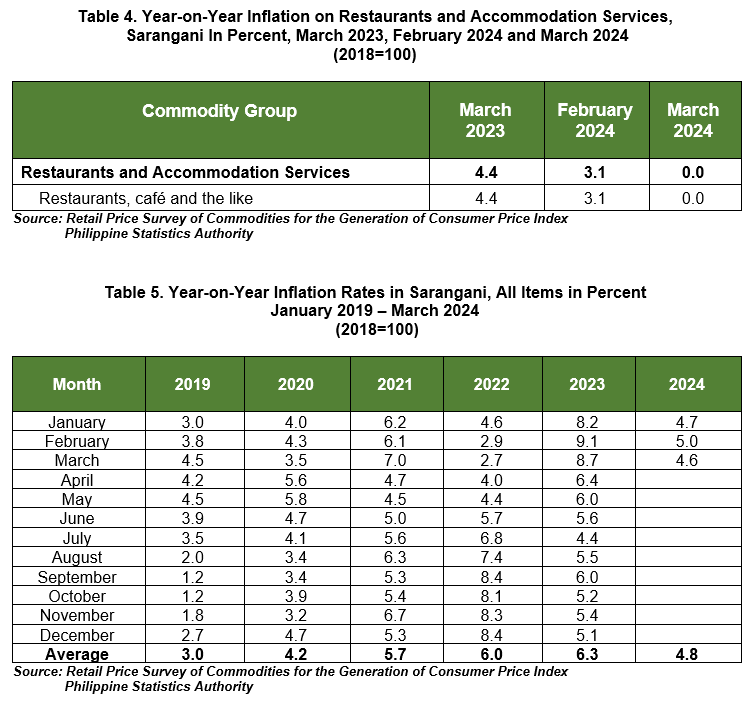
YEAR-ON-YEAR INFLATION RATES
The headline inflation in Sarangani dropped to 4.6 percent in March 2024 from 5.0 percent in February 2024. This is higher than the regional and national levels at 4.4 percent and 3.7 percent, respectively. Inflation rate in March 2023 was higher at 8.7 percent. Average inflation for the first quarter of the year stood at 4.8 percent. (Table 1 and Figure 1).
The downtrend in the province’s inflation rate in March 2024 was primarily due to the annual decline in the index of restaurants and accommodation services at 0.0 percent from 3.1 percent inflation in February 2024. This was followed by food and non-alcoholic beverages at 7.3 percent from 7.6 percent and alcoholic beverages and tobacco at 8.4 percent from 10.8 percent in February 2024.
The following commodity groups also contributed to the downtrend, namely:
a. Housing, water, electricity, gas and other fuels, at -1.8 percent from -1.5 percent;
b. Recreation, sport and culture, at 7.2 percent from 9.2 percent;
c. Personal care, and miscellaneous goods and services, at 3.6 percent from 3.9 percent;
d. Clothing and footwear, at 1.6 percent from 1.9 percent;
e. Furnishings, household equipment and routine household maintenance, at 4.1 percent from 4.3 percent; and
f. Health, at 3.9 percent from 4.0 percent. (Table 2)

On the contrary, an increased inflation was observed in transport at 2.7 percent from 1.3 percent in February 2024. The rest of the commodity groups retained their previous month’s annual rates.
Sarangani’s food inflation decreased to 7.6 percent in March 2024 from 8.0 percent in February 2024. In March 2023, food inflation was higher at 14.4 percent. (Table 3)
The top three food groups that contributed to the decrease in food inflation were rice at 35.2 percent from 38.6 percent in February 2024, followed by meat and other parts of slaughtered land animals at -1.6 percent from 1.7 percent and fish and other seafood at -1.7 percent from -0.4 percent in February 2024.
Lower annual increments were also recorded in the following food groups:
a. Milk, other dairy products and eggs, at 3.6 percent from 5.6 percent;
b. Ready-made food and other food products n.e.c, at 7.9 percent from 8.0 percent; and
c. Corn, at 3.4 percent from 3.8 percent.
Meanwhile, higher annual increments were noted in the following food groups:
a. Oils and fats, at -2.6 percent from -6.0 percent;
b. Fruits and nuts, at 12.8 percent from 9.0 percent;
c. Vegetables, tubers, plantains, cooking bananas and pulses, at -5.0 percent from -11.2
percent; and
d. Sugar, confectionery and desserts, at -6.9 percent from -8.2 percent. (Table 3)

The inflation for restaurants and accommodation services, on the other hand, continued to move downward at 0.0 percent in March 2024 from 3.1 percent in February 2024. The downward inflation in restaurants and accommodation services was primarily due to the lower annual growth of Restaurants, café and the like at 0.0 percent from 3.1 percent in February 2024. (Table 4)

Definition of Terms
Base Period/Year this refers to the period, usually a year, at which the index
number/points is set to 100. It is the point of index number series.
Consumer Price Index the average retail prices of a fixed basket of goods and services
commonly purchased by households relative to a base year
Inflation Rate the annual rate of change or year-on-year change in the CPI
expressed in percent
Market Basket refers to a sample of goods and services that are commonly
purchased and bought by an average Filipino household
Weights a system that considers the relevance of the components of the index
Approved for Release:
SGD
ISMAEL B. RAMOS JR.
Chief Statistical Specialist
For inquiries, please contact:
SGD
MARIFI P. DE ASIS
Supervising Statistical Specialist
Telephone Number (083) 552-2502

